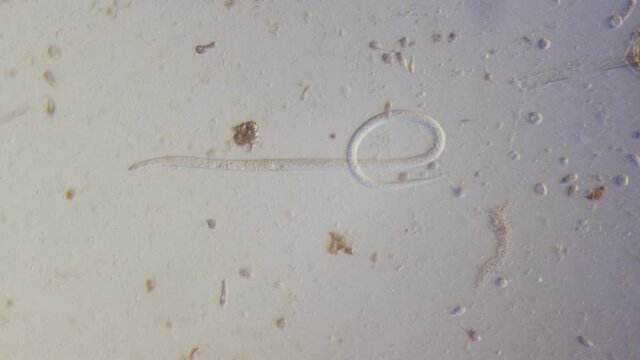
Think of a whipworm like a secretive artist, painting its life story in the textures of leaves and underbrush. They’re often hiding in the soil, making them hard to detect. If you were to walk through a forest, you’d likely focus on the colorful butterflies or the rustling squirrels. Yet, there’s a whole world beneath your feet, bustling with life—but how do you know what you’re looking at when it comes to whipworms? Let’s dive into some common identification challenges and tips to help you spot these elusive creatures in the wild.
Understanding Whipworms: What Are They?
Before we tackle identification, let’s break down what whipworms actually are. Whipworms belong to the genus *Trichuris* and are a type of parasitic roundworm. They mainly thrive in the intestines of their hosts, which can include a variety of animals, such as mammals. The name “whipworm” comes from their slender, whip-like shape. You could think of them as having a long, thin body with a thicker end that resembles the handle of a whip.
In terms of life cycle, whipworms have a fascinating journey. They begin as eggs expelled in a host’s feces. Once in the right environment, they’ll hatch and burrow into the gut of a new host. This whole process can lead to some serious health issues for the host, including nutritional deficiencies and digestive problems. Because they spend most of their lives hidden away inside their host, observing whipworms in the wild can be quite difficult.
Spotting the Signs: Where to Look
If you’re on a mission to identify whipworms in the wild, understanding where to look is crucial. They’re not going to casually stroll by you like a deer or squirrel. Instead, they live primarily in the soil, especially in areas that are rich in organic matter, like grasslands or forests. Here are some signs that might lead you to whipworms:
- Soil samples: Collecting soil samples from various locations can help you catch a glimpse of whipworm eggs.
- Fecal analysis: Observing animal feces in the area can also provide clues. Whipworms often release eggs that can be found in these droppings.
- Host behavior: Look for signs of distress in potential hosts, such as unusual behavior or signs of illness, which can indicate whipworm infestation.
By focusing your search on these signs, you’re giving yourself a better shot at identifying whipworms in their natural habitat. However, keep in mind that observing these signs requires patience and a keen eye.
The Role of Identifying Hosts
When trying to spot whipworms, it’s essential to understand the role of their hosts. Whipworms generally infect mammals, including domesticated animals like dogs and cats. Spotting a host can give you clues about the potential presence of whipworms.
You might notice that certain animals show symptoms like weight loss, lethargy, or intestinal issues. These symptoms can indicate that whipworms are present, making the hosts a focal point for your observations. If you see animals behaving unusually, consider it a potential sign of whipworm infection. It’s like being a detective, piecing together clues from the animal world.
Challenges in Identification: Misidentification Risks
One of the biggest challenges in spotting whipworms is the risk of misidentification. There are many similar-looking parasites in the soil, and distinguishing between them can be tricky. For instance, other roundworms might have a comparable shape but live entirely different lives.
Here’s the thing: misidentifying whipworms could mean overlooking a more serious problem in the ecosystem. If you’re a wildlife enthusiast or a student, understanding the nuances between these creatures is vital. You wouldn’t want to report a whipworm sighting only to find out it was a completely different species!
To avoid this pitfall, familiarize yourself with the visual characteristics of whipworms. Observe their size, shape, and coloration. Make sure to reference reliable field guides or resources as a way to double-check your observations.
Using Technology in Identification
In today’s world, we have some great tools at our fingertips that can help in identification. Mobile apps and other technology can aid in spotting whipworms—or at least providing hints about their presence. Apps that allow you to take pictures of suspected whipworms can be incredibly useful for identification later.
Additionally, some platforms exist for sharing findings with other enthusiasts or scientists. If you find something intriguing, sharing your observation can lead to discussions and further insights. The connectedness of today’s technology means that you don’t have to go it alone; you can tap into a community that shares your interests.
The Importance of Education and Awareness
Finally, understanding whipworms and the challenges of identifying them plays a larger role in ecological awareness. Parasites often get a bad rap for being gross or spooky, but they are part of the ecosystem. Educating others about the importance of whipworms can help build respect for the complex web of life.
Here’s a friendly reminder: fostering curiosity about these creatures can lead to a deeper appreciation of their role in the environment. So the next time you head out on a nature walk, remember that even the smallest creatures, like whipworms, have stories to tell and roles to play.
In summary, while spotting a whipworm can be fraught with challenges, it’s also an incredible opportunity to dive into the complexities of nature. By understanding their life cycle, looking for signs, and educating yourself and others, you can make the unseen seen. Happy exploring!
